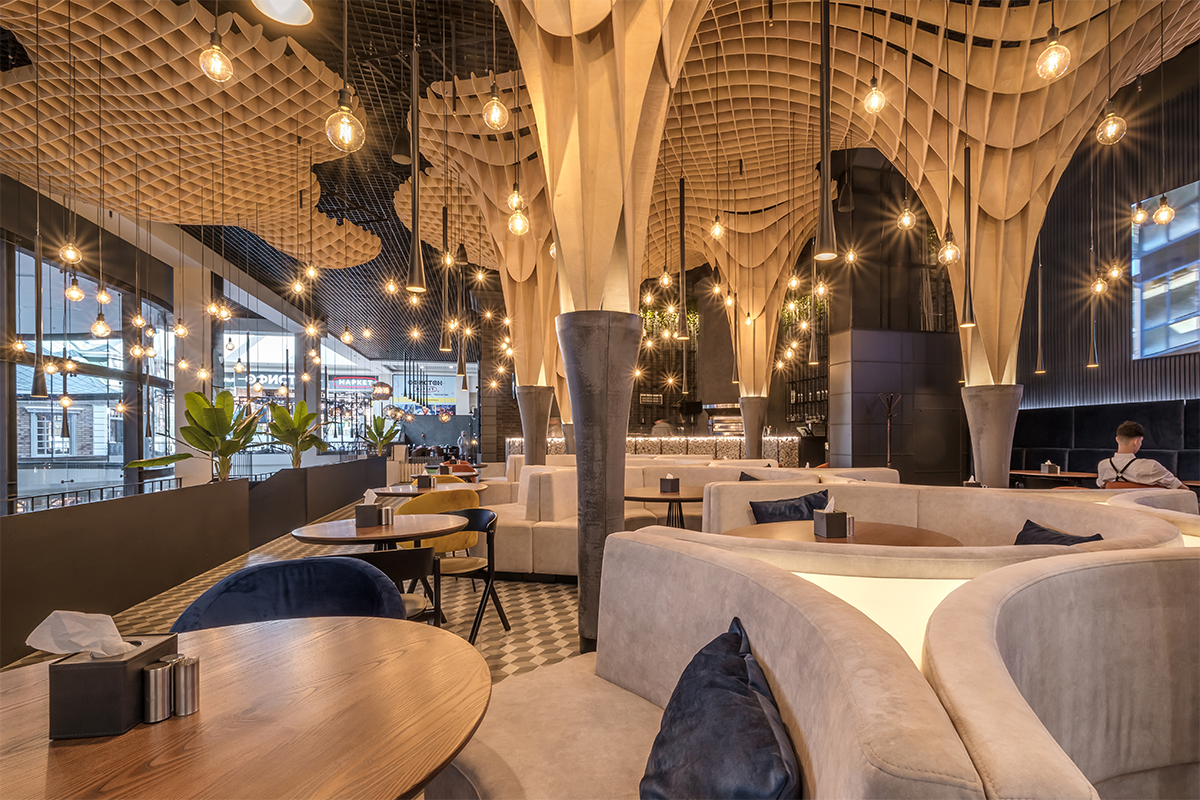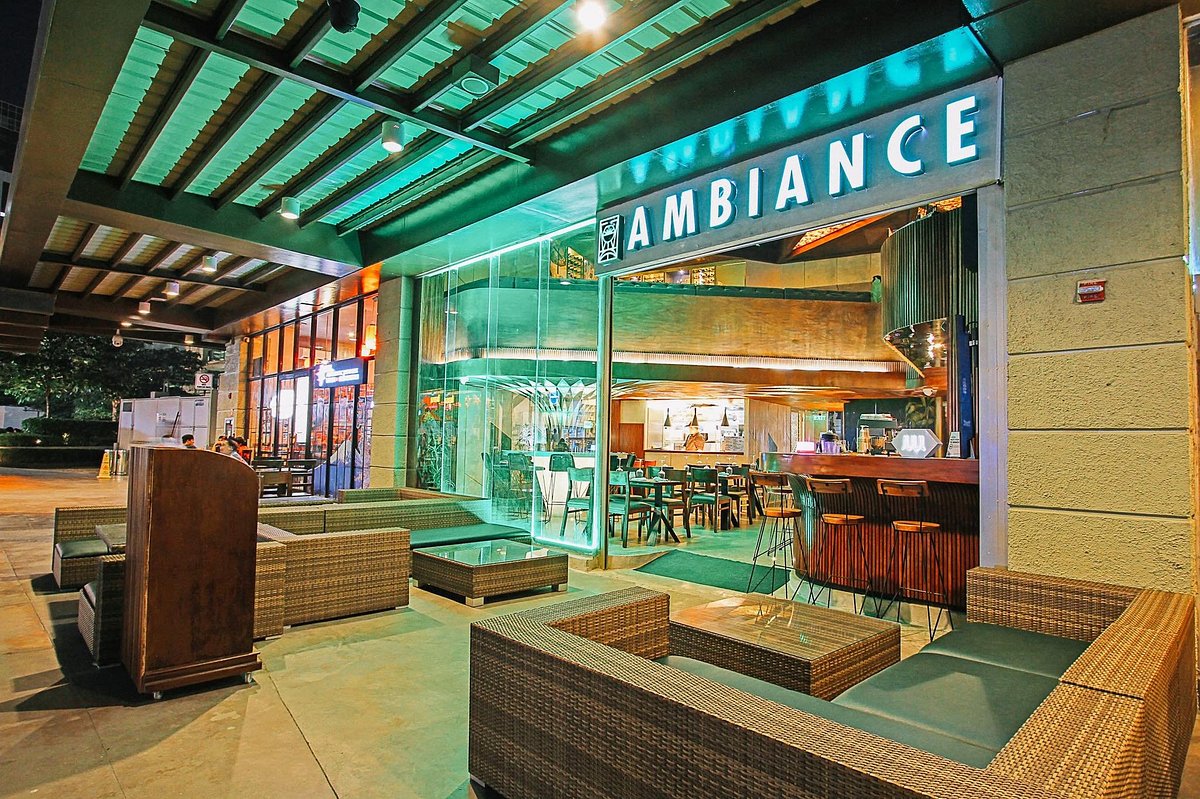Asian Restaurant ISB: A Must-Try Spot for Food Lovers in Islamabad
Wiki Article
Savor Authentic Oriental Food With a Pan-Asian Twist for a Cooking Adventure
Embarking on a cooking trip with authentic Asian food, improved with a Pan-Asian twist, offers a distinct opportunity to explore the abundant tapestry of flavors that specify the region's varied cooking customs. As you ponder these tempting meals, consider the social stories and historical impacts that shape them, each bite providing a story waiting to be uncovered. Fine dining experience Islamabad.
Discovering Pan-Asian Tastes
In the realm of international gastronomy, Pan-Asian cuisine sticks out for its amazing variety and the harmonious interaction of flavors from different Asian cultures. This cooking method commemorates the abundant traditions and one-of-a-kind active ingredients discovered throughout the continent, producing a tapestry of preferences that is both appealing and rewarding. Secret to Pan-Asian food is its ability to stabilize different flavors-- sweet, salted, spicy, and sour-- while highlighting the freshness and quality of each active ingredient.From the umami-rich soy sauce of Japan to the intense chili peppers of Thailand, Pan-Asian cuisine uses a considerable palette of tastes. These elements are frequently incorporated in innovative ways, enhancing meals with layers of intricacy. As an example, using aromatic natural herbs such as lemongrass and cilantro, usual in Vietnamese and Thai food, includes a refreshing brightness to dishes, while the consolidation of coconut milk provides a velvety, rich structure.
The emphasis on fresh produce and fragrant seasonings ensures that each meal is not only a feast for the taste yet also for the detects. Pan-Asian food welcomes restaurants to start a cooking trip, discovering the substantial and differed landscapes of Eastern gastronomy with every bite.
Combination Meals to Attempt
While Pan-Asian food is commemorated for its conventional tastes, the modern cooking landscape is increasingly welcoming combination recipes that blend these classic aspects with impacts from other areas. This innovative technique not only honors the abundant heritage of Eastern cookeries yet also presents novel taste experiences that interest contemporary tastes.
An archetype of such a blend meal is the Korean-Mexican taco, where marinated bulgogi beef is covered in a warm tortilla, topped with kimchi and a hot gochujang-infused salsa. This mix marries the bold, full-flavored flavors of Korea with the lively, fresh elements of Mexican cuisine. In a similar way, sushi burritos have acquired appeal, amalgamating the fragile artistry of Japanese sushi with the hearty, hand-held ease of a burrito, usually featuring combination active ingredients like tempura shrimp and avocado with a drizzle of wasabi mayo.
Another notable recipe is Thai curry ramen, which instills the velvety, aromatic spices of Thai curry into the soothing brew of typical Japanese ramen, creating a harmonious blend that tantalizes the senses. These combination meals expand past plain uniqueness; they stand for a cooking discussion in between societies, encouraging exploration and development worldwide of Pan-Asian cuisine.
Necessary Ingredients and Spices
To really value Pan-Asian food, one must comprehend the necessary active ingredients and seasonings that create its structure. This varied cooking style draws from a rich tapestry of Asian traditions, using an unified mix of textures and flavors. Trick ingredients include soy sauce, fish sauce, and oyster sauce, which impart a tasty umami depth necessary to Oriental dishes. Corresponding to these are rice vinegar and mirin, offering a fragile acidity and sweetness.Fragrant aspects are crucial, with ginger, lemongrass, and garlic being ubiquitous this contact form across different Pan-Asian recipes. These ingredients give a fragrant base that enhances the complexity of tastes. Flavors such as celebrity anise, cardamom, and cinnamon introduce heat and character, resembling influences from areas like China and India.

Food Preparation Techniques and Tips
Grasping the art of Pan-Asian food calls for familiarity with its unique food preparation techniques, each adding to the dynamic tapestry of flavors this cooking tradition is celebrated for. Central to these techniques is the stir-fry, a quick food preparation strategy that maintains the dietary integrity and vibrant colors of active ingredients. Making use of a frying pan, the stir-fry approach permits even heat distribution, crucial for achieving the characteristic structure and taste balance of Pan-Asian meals.An additional fundamental method is steaming, especially prevalent in Chinese cuisine. This mild method maintains the natural flavors and nutrients of components, making it excellent for fish and shellfish and veggies. Dumplings, a beloved staple, frequently gain from steaming, resulting in soft, succulent appearances.
Cooking, additionally important, gives smoky depths to recipes such as Oriental bulgogi or Japanese yakitori (pan asian dining Islamabad). This method frequently involves marinating ingredients, permitting tastes to pass through deeply prior to cooking over an open flame or hot plate
Finally, grasping the art of balancing flavors-- wonderful, sour, salty, bitter, and umami-- is important. Effectively layering these components can boost a recipe from average to phenomenal, supplying a complex and pleasing culinary experience that symbolizes the significance of Pan-Asian cuisine.
Dining Experiences Worldwide
Around the world, Pan-Asian cuisine offers an unequaled dining experience, celebrated for its rich tapestry of flavors and vivid presentations. This cooking sensation has actually transcended social borders, catching the hearts and tastes buds of food lovers worldwide. In cosmopolitan cities like New York, London, and Sydney, Pan-Asian restaurants serve as fusions where cooking practices from Thailand, Japan, China, and past merge, giving restaurants with a diverse mix of recipes that highlight the area's diversity.The international allure of Pan-Asian cuisine depends on its capacity to use both authenticity and technology. Chefs masterfully marry conventional components such as lemongrass, soy sauce, and miso with contemporary techniques, resulting in pop over to these guys meals that are both acquainted and refreshingly new. This combination allows diners to start a culinary journey that values heritage while accepting modernity.
Additionally, eating experiences are elevated with thoughtfully designed environments that show the values of Pan-Asian looks. From minimalist Japanese-inspired insides to vibrant Thai-themed areas, each restaurant supplies an one-of-a-kind ambiance that matches the cooking offerings. As an outcome, patrons are not simply consuming a meal yet partaking in a cultural experience, making Pan-Asian eating an absolutely worldwide phenomenon.
Final Thought
The exploration of Pan-Asian cuisine uses an extensive understanding of the complex interplay of flavors and cooking traditions throughout Asia. By embracing blend meals such as Thai curry ramen and sushi burritos, the cooking journey not just highlights the versatility of typical ingredients yet also showcases cutting-edge modern techniques. This gastronomic journey, enriched by cooking methods and important seasonings, supplies a distinct opportunity to value the multiculturalism and culinary artistry that specify Pan-Asian cuisine on a global range.Getting started on a culinary journey with genuine Oriental food, enhanced with a Pan-Asian spin, provides an one-of-a-kind chance to check out the rich tapestry of flavors that define the region's varied cooking customs.In the world of worldwide gastronomy, Pan-Asian food stands out for its amazing diversity and the unified interaction of flavors from numerous Asian cultures. Secret to Pan-Asian cuisine is its capability to balance different tastes-- wonderful, salted, spicy, and sour-- while highlighting the quality and high quality of each active ingredient.

Report this wiki page